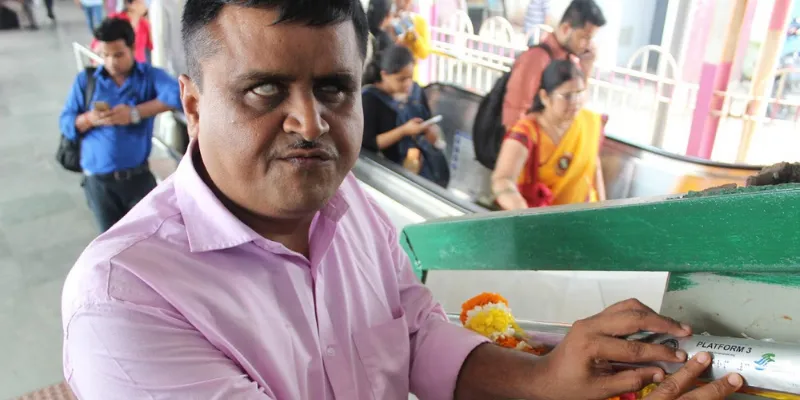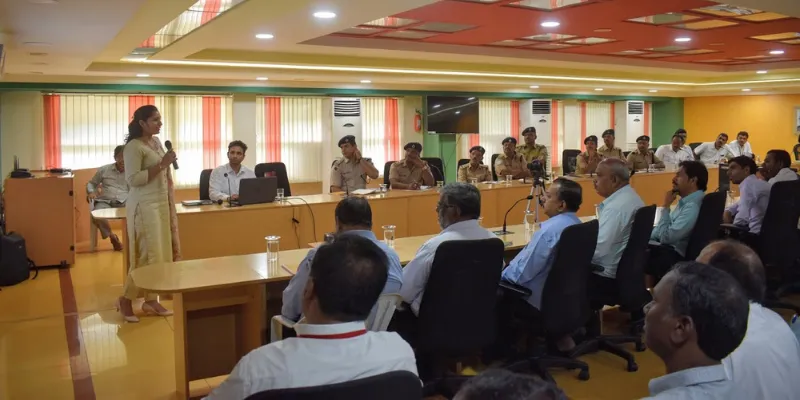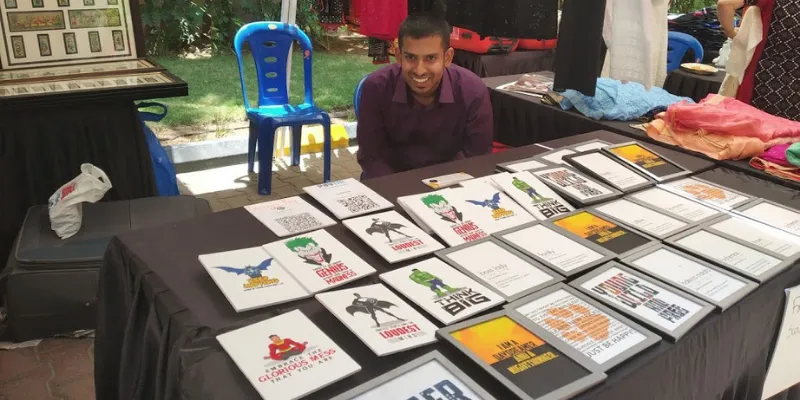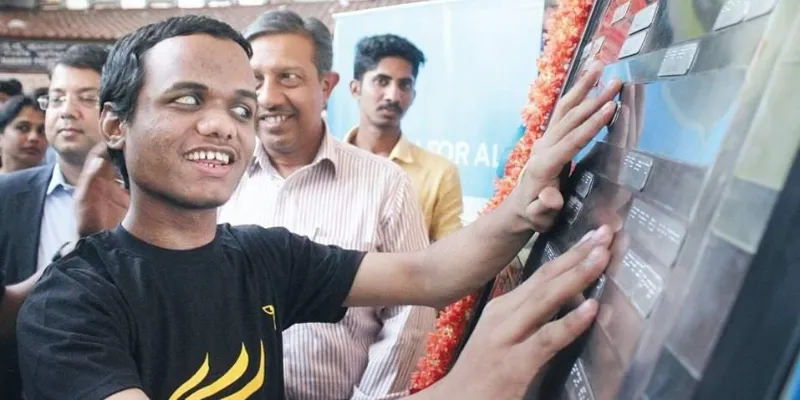On the right track: how this organisation built India's first inclusive railway station for the blind
After collaborating with the Indian Railways to make Mysuru the first blind-friendly railway station in India, Anuprayaas, a Bengaluru-based social enterprise, is working towards making public transport in the country both inclusive and accessible.
All of us have the desire to travel, explore unknown destinations, and embark on expeditions. However, a large section of the population in India finds it arduous to move from one place to another due to inaccessible infrastructure. According to the last Census conducted in 2001, over 21 million people in the country are differently-abled, but only three percent of public spaces are accessible for them.
Anuprayaas, a Bengaluru-based social enterprise is on a mission to change this. The organisation is not only working towards creating inclusive neighbourhoods but also sensitising people about different disabilities.
Watch the video interview here with the founders:
In a first of sorts, it has collaborated with the Indian Railways to give the country its first ever blind-friendly railway station in Mysuru.
“Equal access to public places is a right, not a privilege. We wanted to help the disabled to exercise this right and lead independent lives, and one of the important ways to ensure this is to make way for accessibility,” Pancham Cajla, Co-founder, Anuprayaas tells YourStory.
Also read: Accessible India campaign - a step towards dignified life for the disabled
Efforts to improve rail accessibility

Minister of Parliament Pratap Simha at the inauguration of the Mysore-Varanasi Express.
Rail transport is one of the most preferred modes of travel especially when one has to cover long distances. For the differently-abled, it’s a different situation altogether. Uneven flooring, absence of ramps, and lack of navigation facilities are some of the factors that add to their travelling woes.
Anuprayaas started taking actionable measures to address these issues in 2014.
“We first made way for a blind-friendly railway station in Mysuru followed by revamping the Mysore-Varanasi Express to make it fully accessible for the visually impaired. The efforts did not stop there. We extended the same kind of work at Borivali station in Mumbai and the KSR railway station in Bengaluru,” Shakti Cajla, Co-founder, Anuprayaas adds.
The organisation did some groundwork in order to understand the needs of the visually impaired. The team, including volunteers, spoke to many differently-abled people to perceive the challenges they face when they use railway networks. Later, they designed a roadmap to fix all the issues.

A visually impaired person using the Braille platform indicators on the railings at the Borivali railway station, Mumbai.
“We incorporated a number of features in railway stations and trains to make travel hassle-free for the visually impaired. A few of these are affixing platform indicators on staircase railings in Braille, installing tactile maps around the station so that the blind can navigate easily, putting up train schedules, seat and coach numbers in Braille and providing Braille menu cards at all eateries within station limits,” Pancham explains.
Over 30 people including students, architects, designers and research professionals volunteered to work with Anuprayaas. While the Indian Railways extended its support towards all the initiatives taken up by the enterprise both in terms of technical guidance and institutional framework, the task of implementation was given to contractors. The team raised most of the funds through Corporate Social Responsibility (CSR) and other volunteer-driven donations.

Shakti Cajla, Co-founder of Anuprayaas, conducting a disability sensitisation programme for railway staff.
Awareness about a particular disability is crucial in order to create a positive and inclusive environment. Hence, the team of Anuprayaas conducted disability awareness programs for all the railway staff. It later began organising similar sessions at schools, colleges, and corporate organisations.
“Sensitising people about various disabilities helps them develop a sense of empathy. This is the only way discrimination and stereotypes can be avoided. The railway staff can help enrich travel experiences for the disabled just by being more patient and understanding,” Shakti emphasises.

An intern working with Anuprayaas at the counter of a BrailleMate stall.
Anuprayaas recently moved from being a not-for-profit organisation to a self-sustainable one. It started selling merchandise called BrailleMate focused on sensitising communities about visual impairment including T-shirts, posters and wall décor with braille prints. “This initiative has the potential to both generate awareness as well as bring us some revenue,” Shakti notes.
Enabling the visually impaired to travel with ease
Being an entrepreneur, Sagar Patil had to travel to several places to meet investors and close new deals. However, he missed the train multiple times at Borivali railway station in Mumbai as he couldn’t locate the right platform.

A visually impaired using the braille tactile map to navigate across the KRS railway station in Bengaluru.
“Nobody had the time nor the patience to guide me properly, maybe since I was blind. After I started using the Braille indicators on the railings installed by Anuprayaas, things became very convenient. I haven’t missed a train ever since,” Sagar tells YourStory.
Eighteen-year-old Aadil Hussain had similar views. “I have taken the Mysore-Varanasi Express a lot of times and the kind of facilities the train has for the visually impaired is commendable. I feel a lot more empowered and independent whenever I board the train,” he says.
Also read: Why it is important to move the disability discourse from charity to rights
How the seed was sown
Anuprayaas, was established by Pancham Cajla and Shakti Cajla in November 2014. Back in college, Pancham used to help the visually impaired write their exams by being a scribe.

The team of Anuprayaas including the co-founders, Pancham Cajla and Shakti Cajla (centre)
While he was at it, he began noticing the challenges being faced by the visually impaired on a daily basis. When he began working for a software company after college, he again got the opportunity to work closely with the blind as part of the organisation’s Corporate Social Responsibility (CSR) initiatives.
“I wanted to make their lives easier by making public spaces accessible, and that’s how Anuprayaas came into being. Now, my only mission is to make India both inclusive and accessible for the differently-abled,” he says.
Also read: On International Day of Disabled Persons, Alleppey beach becomes disabled friendly






